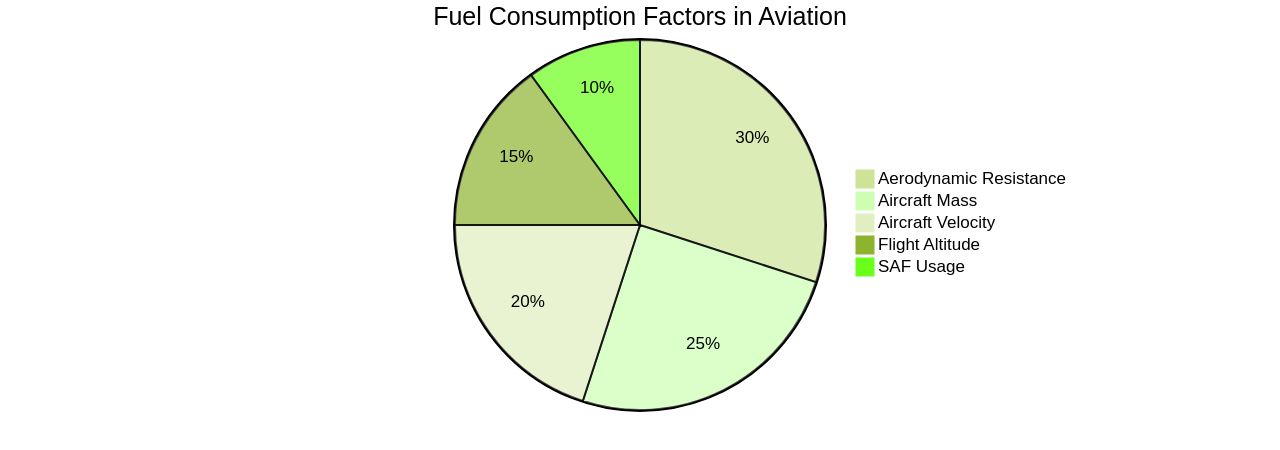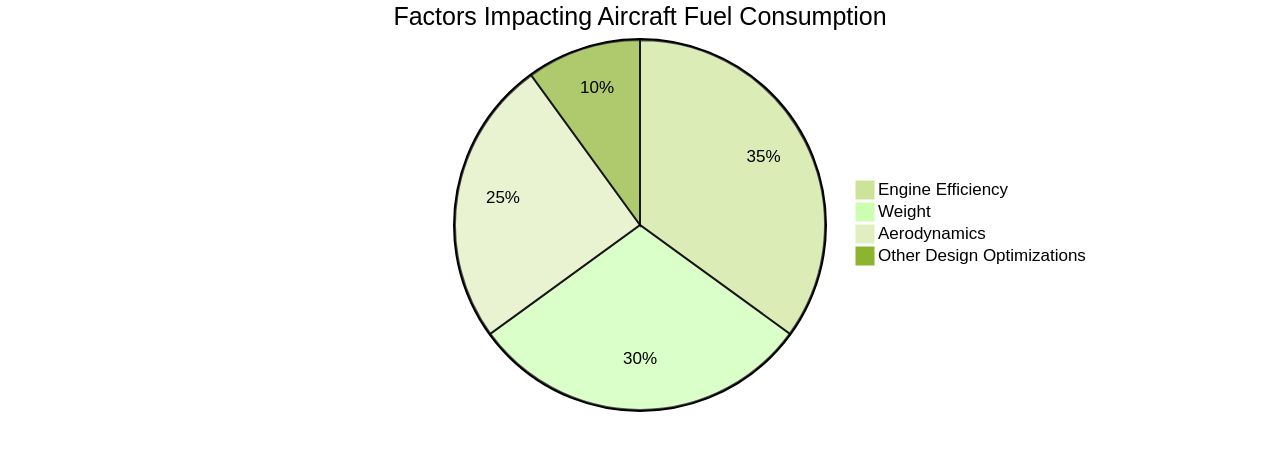Introduction
Fuel efficiency in aviation is a critical concern for both airlines and the environment. As the industry seeks to reduce operational costs and carbon emissions, understanding and optimizing aircraft fuel consumption becomes paramount.
This article explores the factors that affect fuel usage in aviation, including aircraft characteristics, operational strategies, and external conditions. By delving into these aspects, we can gain valuable insights into how the industry can achieve greater fuel efficiency and sustainability.
Understanding Aircraft Fuel Consumption
Fuel efficiency in aviation is not just an economic imperative for airlines; it's also a cornerstone for reducing environmental impact. As identified by economists Brueckner, Kahn, and Nickelsburg, the choices airlines make in response to fuel price fluctuations have significant ramifications for both operational costs and carbon emissions. The deployment of an airline's capital stock, consisting of long-lived aircraft, is a highly granular decision that can influence fuel conservation efforts and, consequently, emission levels.
The equation for optimizing fuel consumption is multifaceted. Aerodynamic resistance plays a pivotal role, as it necessitates thrust to maintain flight. This resistance is directly tied to an aircraft's mass; thus, reducing mass is a straightforward approach to diminishing fuel usage.
For instance, a 1% reduction in mass can yield a 0.75% decrease in fuel consumption. Moreover, flight altitude and aircraft velocity are critical variables; higher altitudes typically result in lower fuel consumption, while reduced speeds can decrease resistance. Sustainable Aviation Fuels (SAF) have emerged as a key solution to curtail CO2 emissions, with industry leaders like Airbus aiming to make their fleets 100% SAF-capable by 2030.
Integrating innovative technologies such as flexiforming from Unifuel. Tech can further this ambition. Flexiforming allows operators to adapt their decarbonization pace by retrofitting existing infrastructure, which is particularly beneficial for airlines considering the long lifespan of their aircraft.
This technology promises to reduce both capital expenditure and carbon intensity, making it a timely addition to the collective efforts of reducing aviation's environmental footprint. Despite the current SAF production meeting less than 0.2% of the industry's needs, the potential for flexiforming to optimize fuel processing and usage could accelerate the transition to net-zero emissions by 2050. Strategic flight planning, incorporating SAF, and considering engine replacements remain integral to a comprehensive approach to addressing the dual challenges of cost and climate impact in aviation.

Factors Affecting Aircraft Fuel Consumption
Fuel consumption in aviation is a multifaceted issue, influenced by a combination of aircraft characteristics, operational strategies, and external conditions. The intricate relationship between these factors necessitates a nuanced approach to managing fuel usage. Aircraft mass, for instance, directly affects resistance, which in turn impacts fuel consumption.
Data indicates that a 1% reduction in aircraft mass can lead to a 0.75% decrease in fuel usage. This highlights the importance of optimizing aircraft weight and engine efficiency to mitigate energy waste and reduce emissions. Operational adjustments, such as improved flight planning, can significantly influence fuel efficiency.
As noted by Andreas Walter, an aerospace engineer and technical officer, the adoption of a performance-based approach to flight planning can enhance fuel savings while ensuring safety and compliance with regulations. This is supported by statistics revealing that regional airlines with more fuel-efficient fleets, such as those with a higher proportion of turboprop aircraft, show a stark contrast in fuel efficiency compared to less efficient carriers. Moreover, external factors, like fluctuating oil prices and the push for sustainable aviation fuels, play a crucial role in the aviation industry's fuel consumption patterns.
The demand for bio-jet fuel is rising, driven by its potential to lower pollution levels and support sustainable air travel. However, the market's progression has been hindered by high costs and the COVID-19 pandemic's impact on travel. As the industry recovers and looks to accommodate an increasing number of passengers, the focus on fuel-efficient operations and alternative fuel sources will become even more critical in shaping a sustainable future for aviation.
Aircraft Characteristics
Aircraft characteristics such as weight, aerodynamics, and engine efficiency are pivotal in determining fuel consumption. Research indicates that a mere 1% decrease in aircraft mass can lead to a 0.75% reduction in fuel use.
This underscores the importance of optimizing aircraft design to achieve lower emissions and fuel usage. Advanced computational tools are now employed to refine aerodynamics, mirroring techniques used in the automotive industry under CAFE standards to achieve significant fuel efficiency gains.
Concurrently, the aviation sector is exploring the potential of propfan engines, which can offer a substantial 20% fuel saving over conventional engines. Integrating such engines into aircraft design is part of the industry's broader strategy to address the environmental impact of flying. With the pressure to reduce carbon emissions mounting, the industry is also examining the feasibility of alternative fuels and more efficient flight operations. These endeavors are not only environmentally responsible but also economically prudent, as they can mitigate the risks associated with oil supply and the volatility of fuel prices.

Operational Factors
Airlines and pilots are acutely aware that the operational choices they make have significant repercussions, not only on the bottom line but also on the environment. Selecting the most fuel-efficient flight paths and altitudes is a critical component of flight operations.
It's a delicate balance between energy management—where kinetic and potential energy are harnessed and converted for optimal aircraft performance—and the imperative to mitigate climate-change externalities. The industry's current focus is on reducing carbon emissions, with Sustainable Aviation Fuel (SAF) emerging as a viable alternative to conventional kerosene, evidenced by the historic flight powered by used cooking oil.
Moreover, innovations in aircraft technology and flight management are pivotal. NASA's advanced autonomy systems, for example, enable real-time optimization of flight routes, which can lead to substantial fuel savings.
This is not just theoretical; major airlines have implemented new technologies to streamline operations, such as optimizing gate assignments to reduce taxi times, which has led to a 20% reduction in taxi time and a savings of 1.4 million gallons of fuel annually for one major carrier. The economic model of the cost index (CI) further illustrates the trade-offs between fuel consumption and time cost. By adjusting the CI, airlines can tailor their operational strategies to the specific conditions of each flight, thereby minimizing overall costs and emissions. The extensive data collected from flights allows for a granular analysis of the capital stock's utilization, enabling airlines to make informed decisions that align with both fiscal responsibility and environmental stewardship.
Conclusion
Fuel efficiency in aviation is crucial for both airlines and the environment. Optimizing fuel consumption involves considering aircraft characteristics, operational strategies, and external conditions.
Aircraft characteristics, such as weight and engine efficiency, play a significant role in fuel consumption. Even a small reduction in aircraft mass can lead to substantial fuel savings.
Advanced computational tools and propfan engines offer promising solutions. Operational factors, including flight paths and altitudes, greatly influence fuel efficiency.
Innovations in aircraft technology enable real-time route optimization and substantial fuel savings. The cost index model allows airlines to tailor strategies to minimize costs and emissions.
External factors like fluctuating oil prices and the push for sustainable aviation fuels also impact fuel consumption. Sustainable Aviation Fuels (SAF) are emerging as a key solution to reduce CO2 emissions. Innovative technologies like flexiforming can accelerate the transition to net-zero emissions. In conclusion, achieving greater fuel efficiency and sustainability in aviation requires a comprehensive approach. By optimizing aircraft characteristics, adopting advanced technologies, and embracing sustainable fuels like SAFs, the industry can reduce costs, carbon emissions, and environmental impact while ensuring long-term viability.




